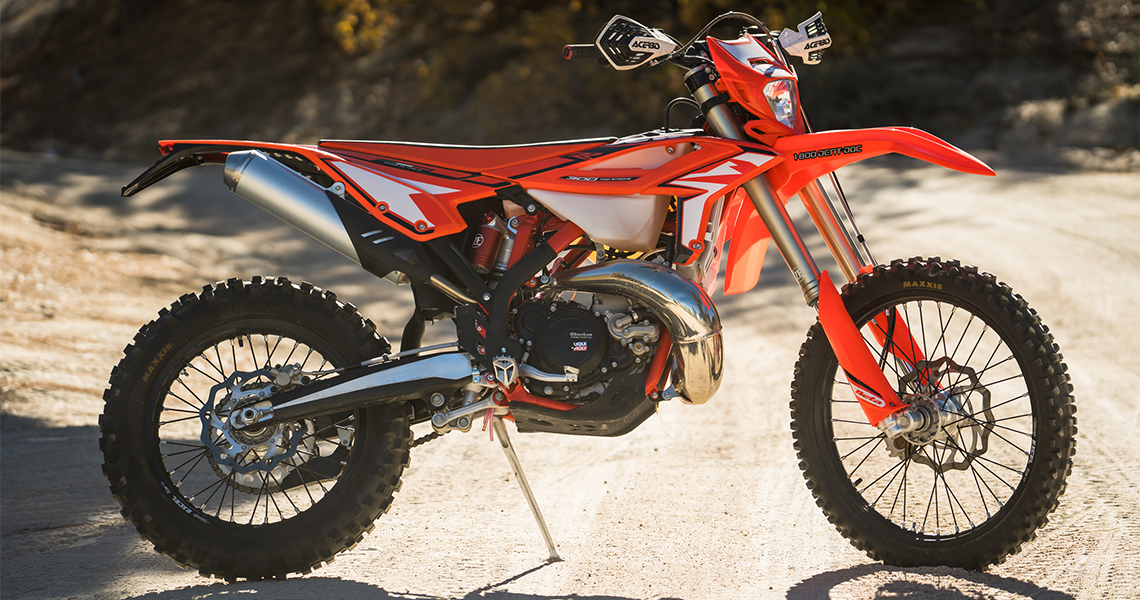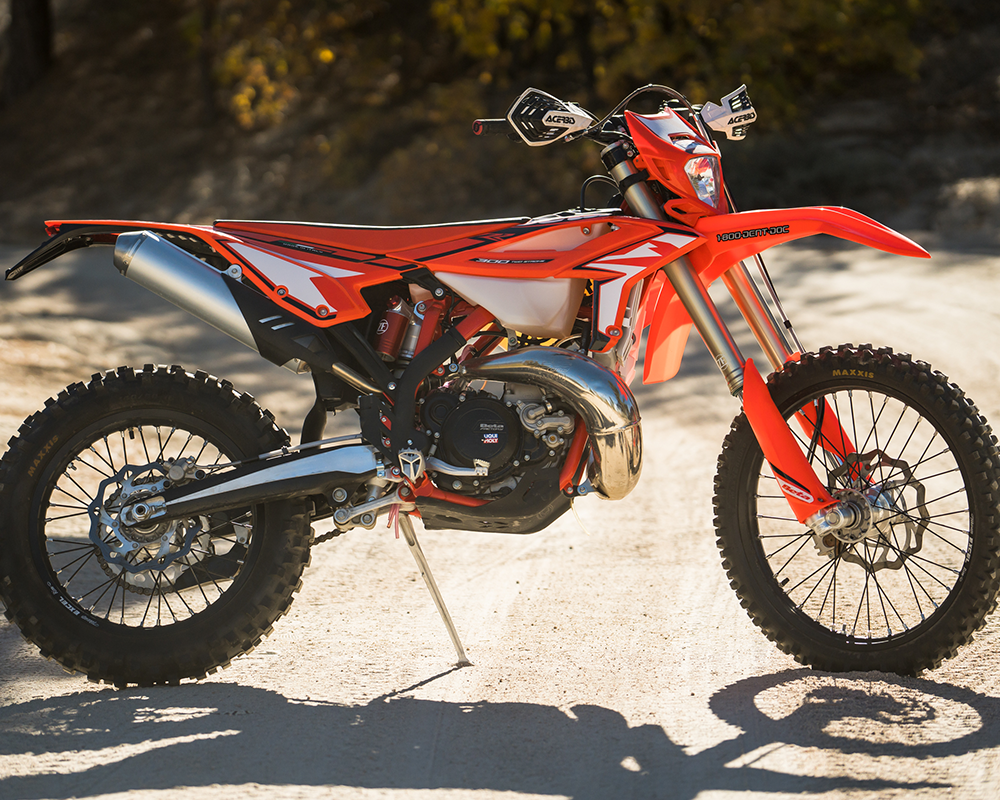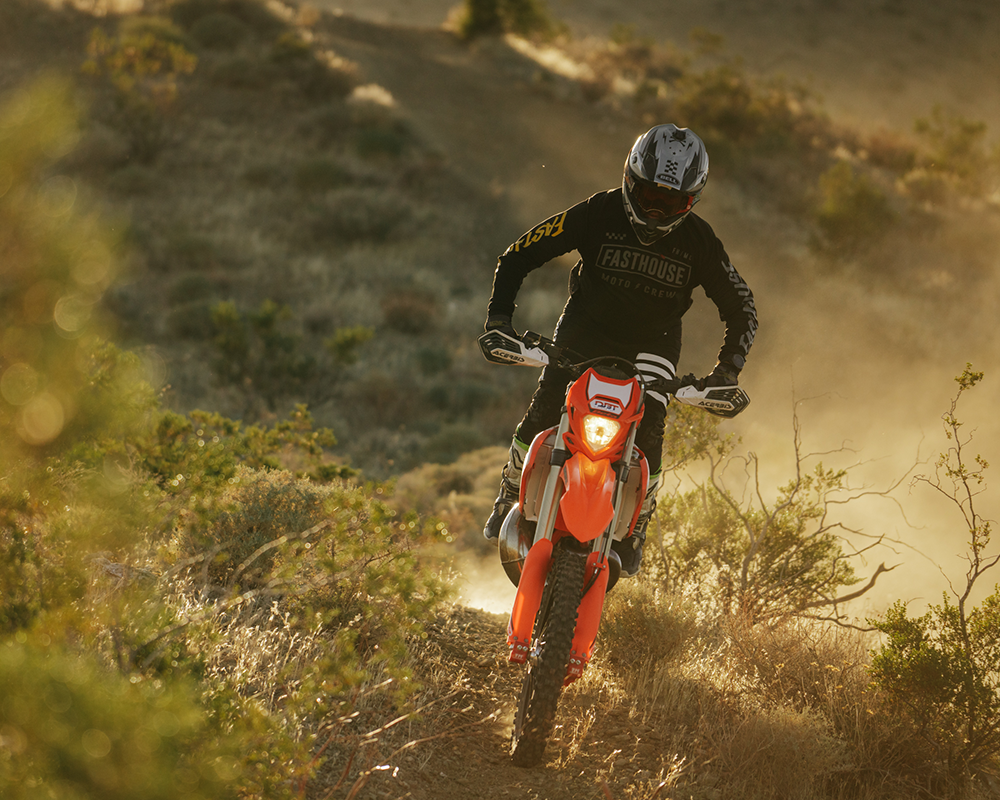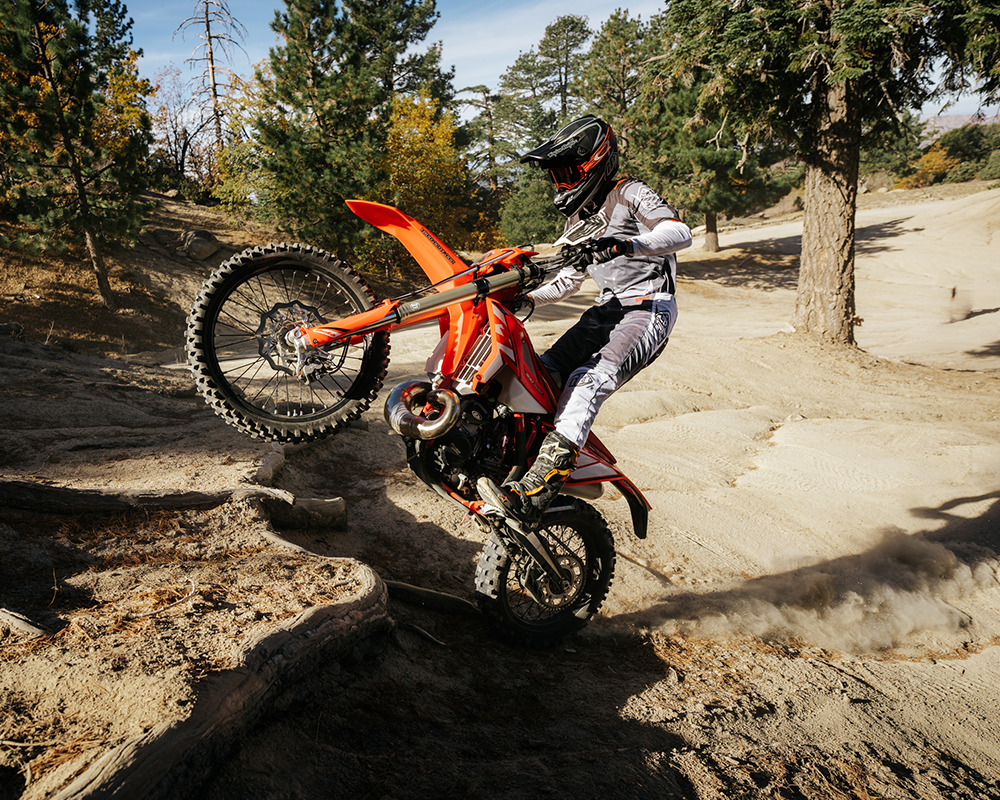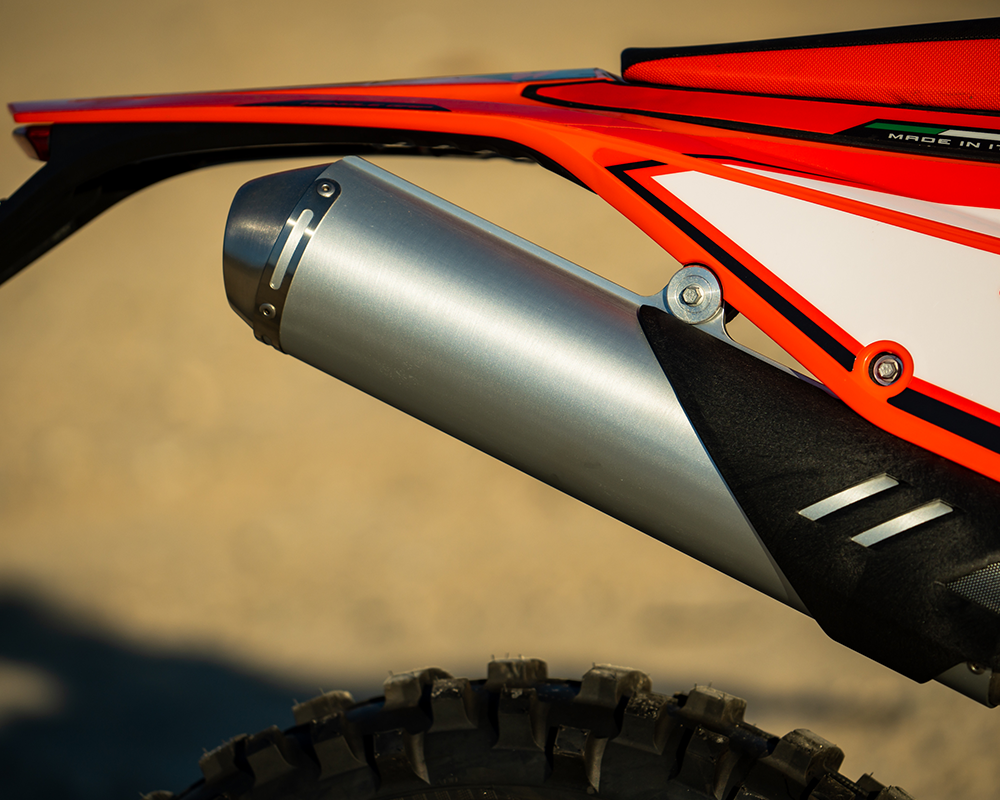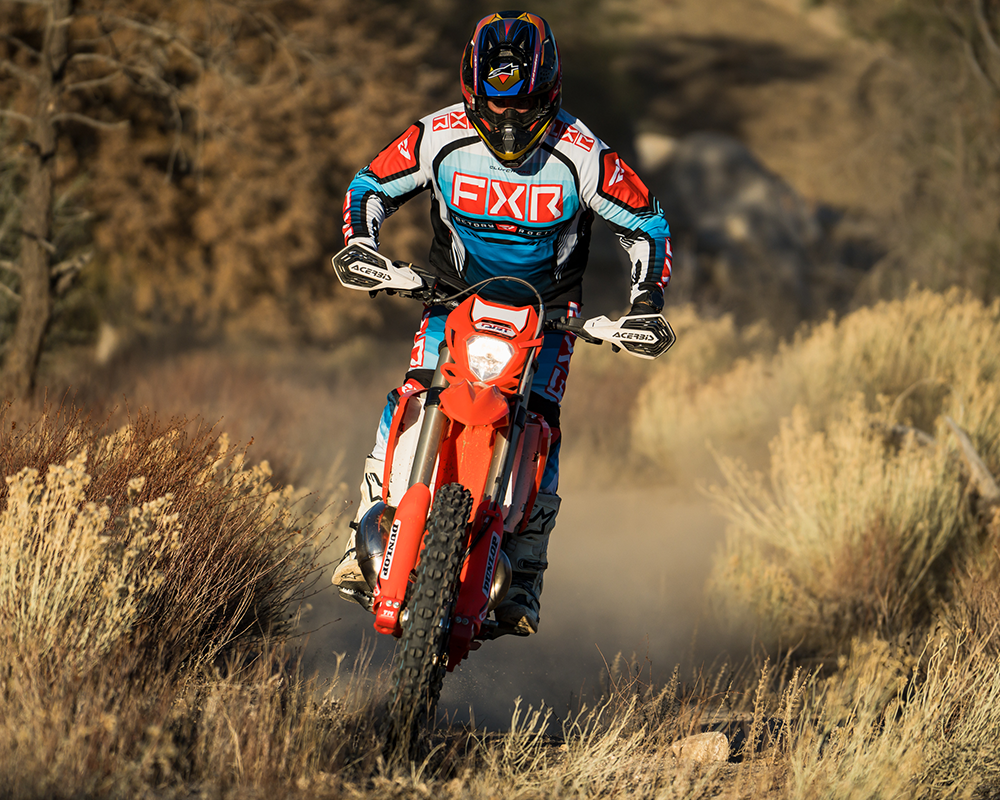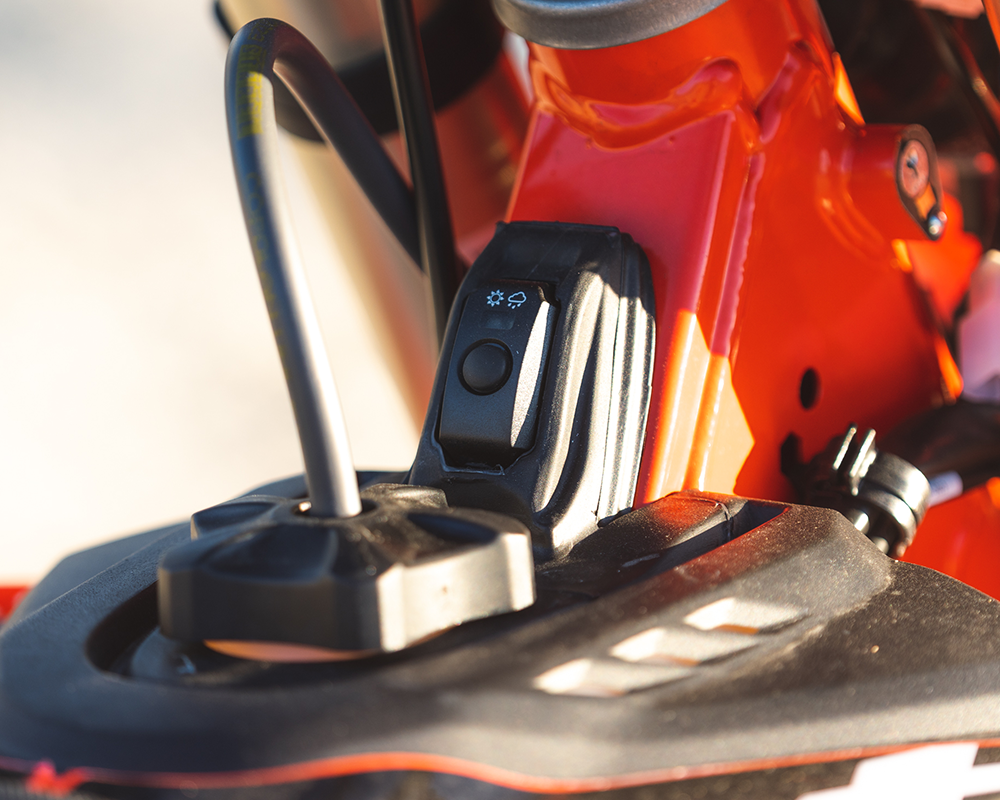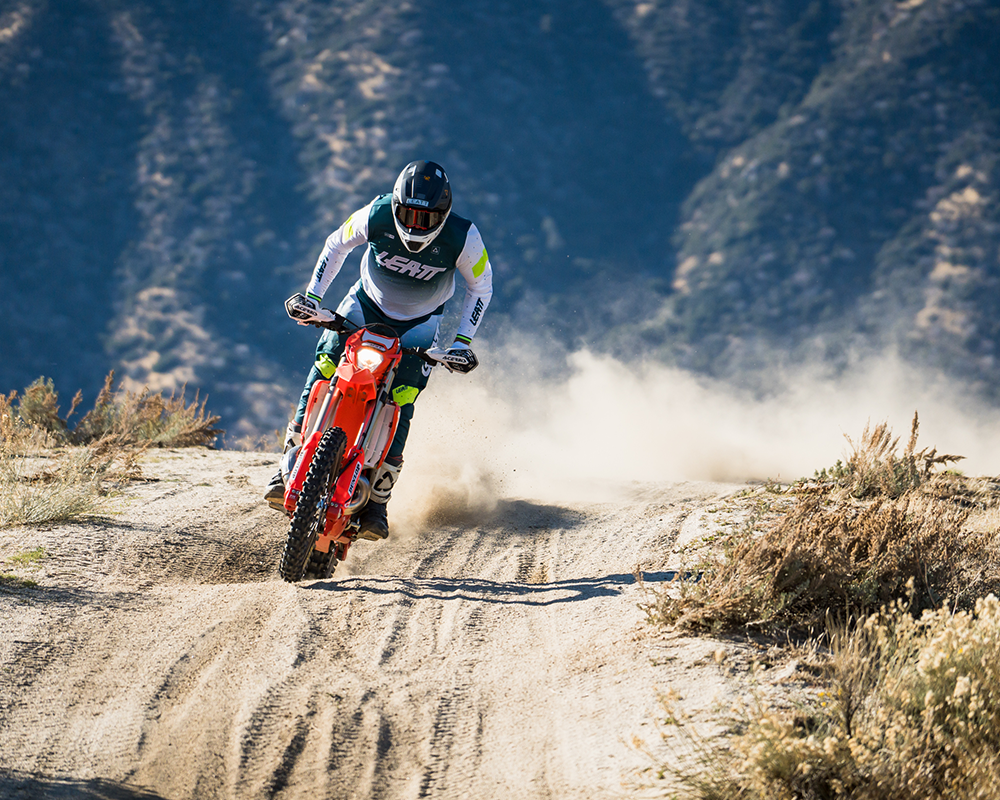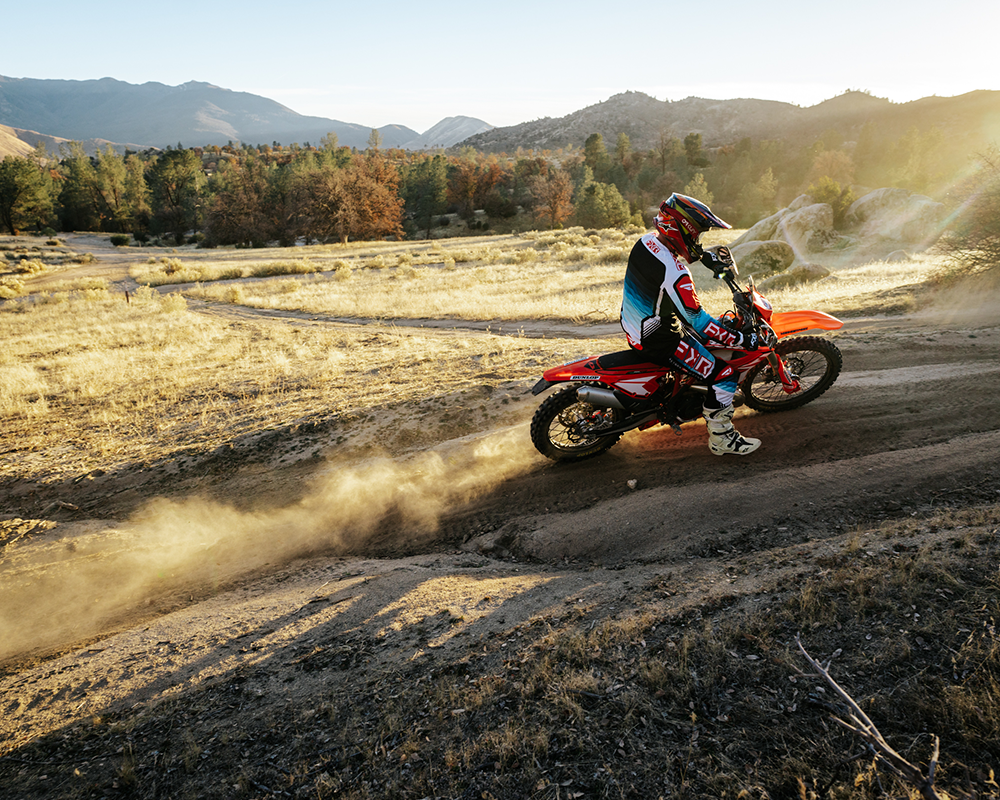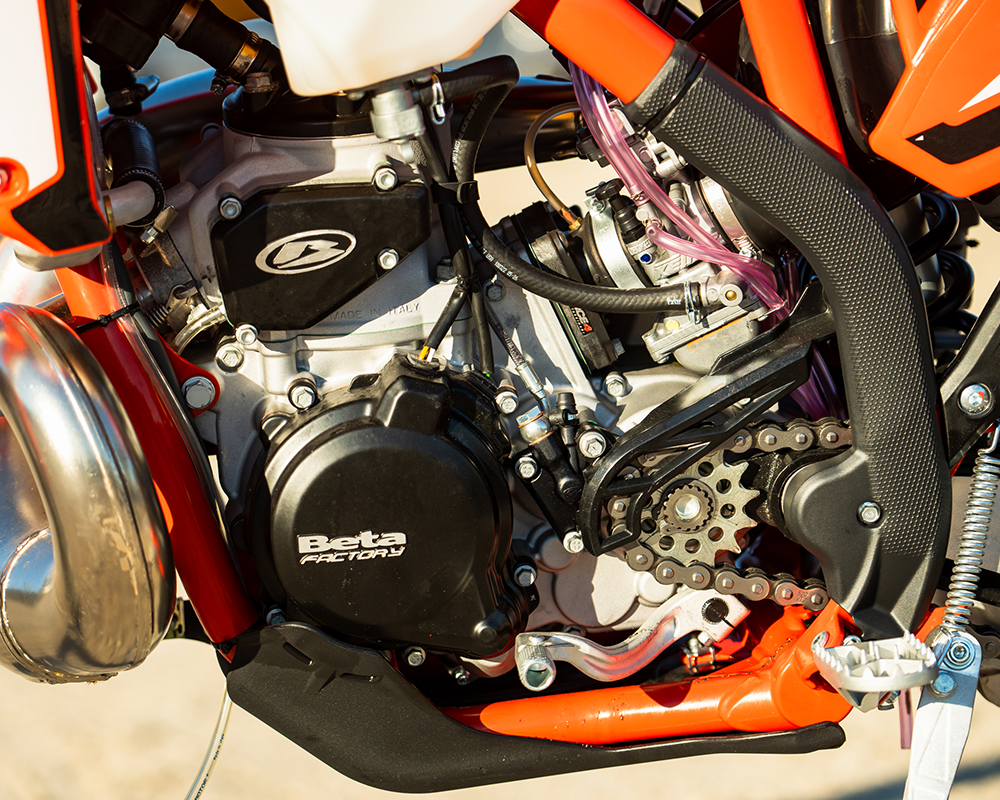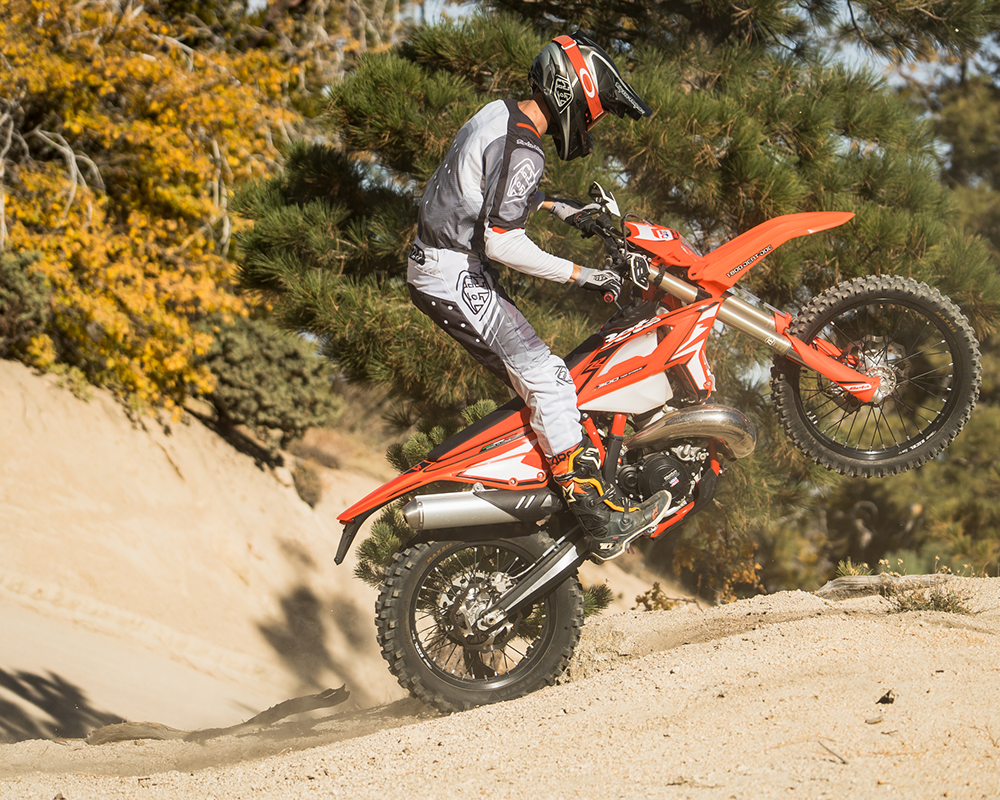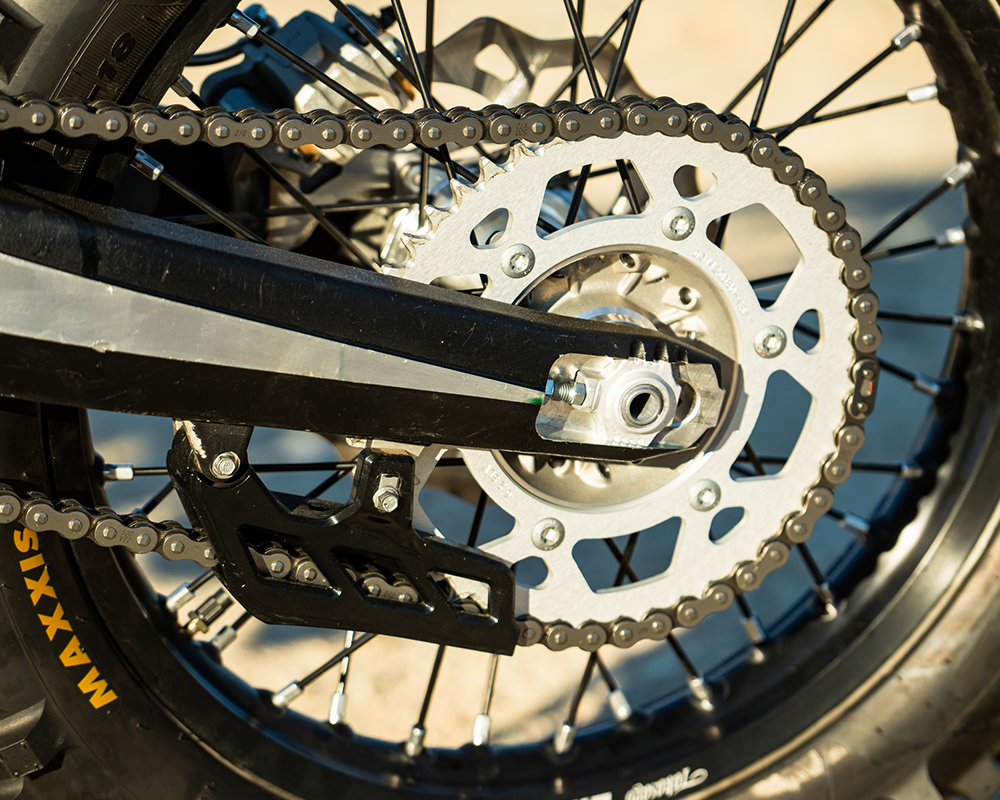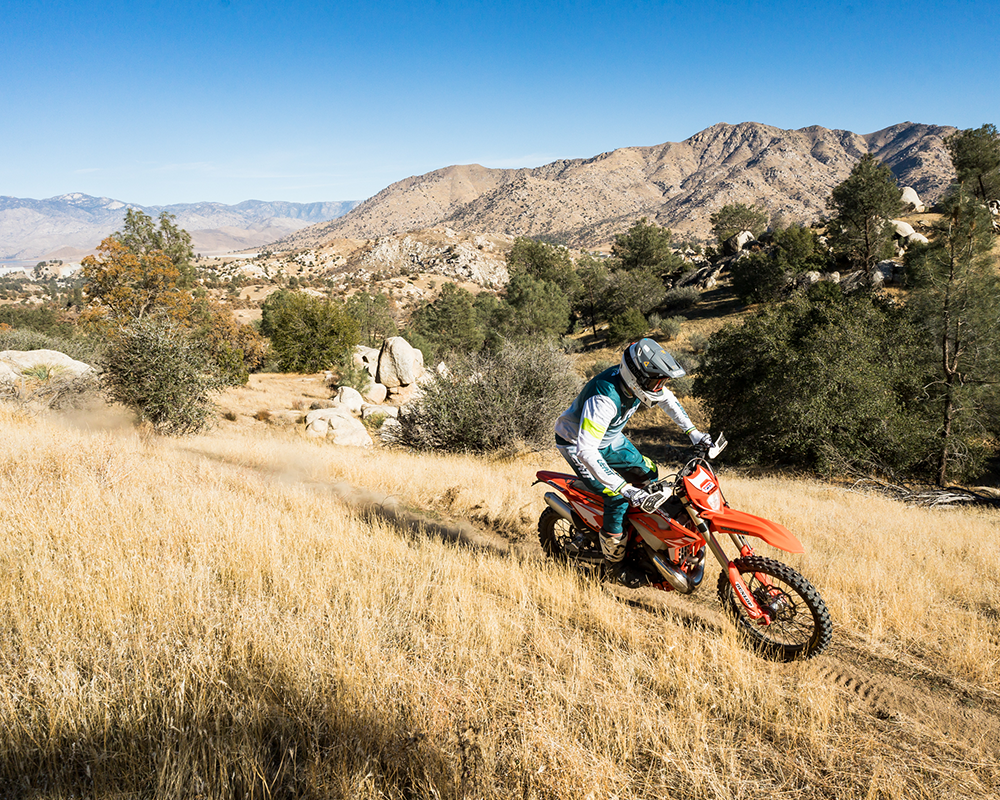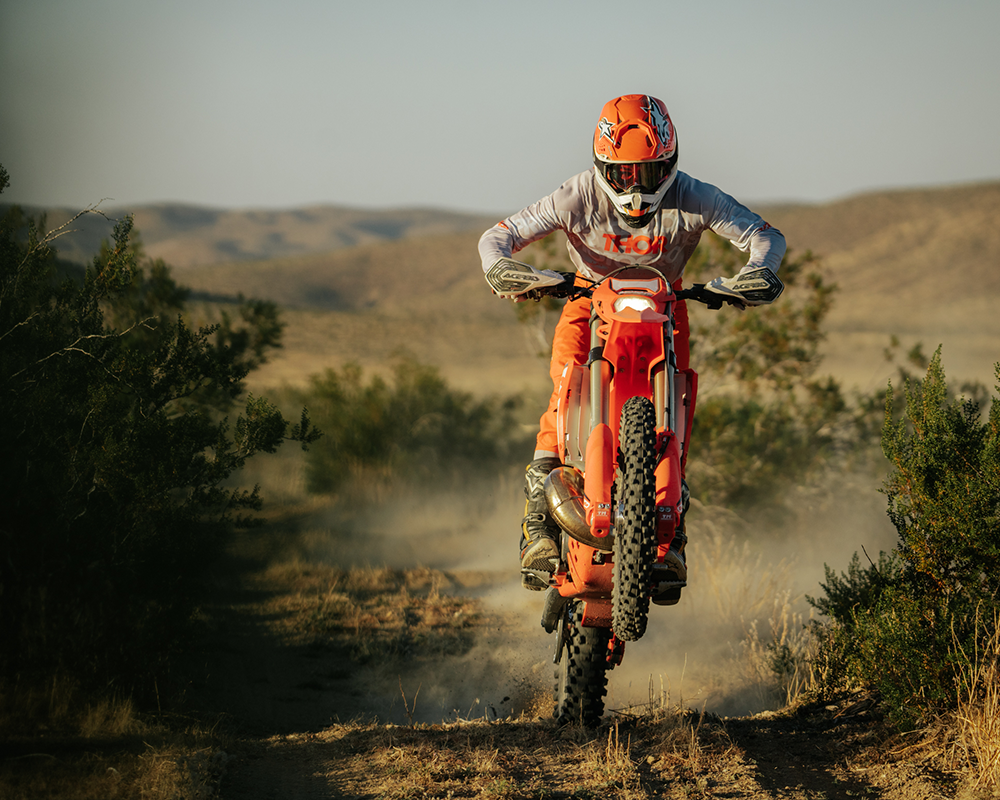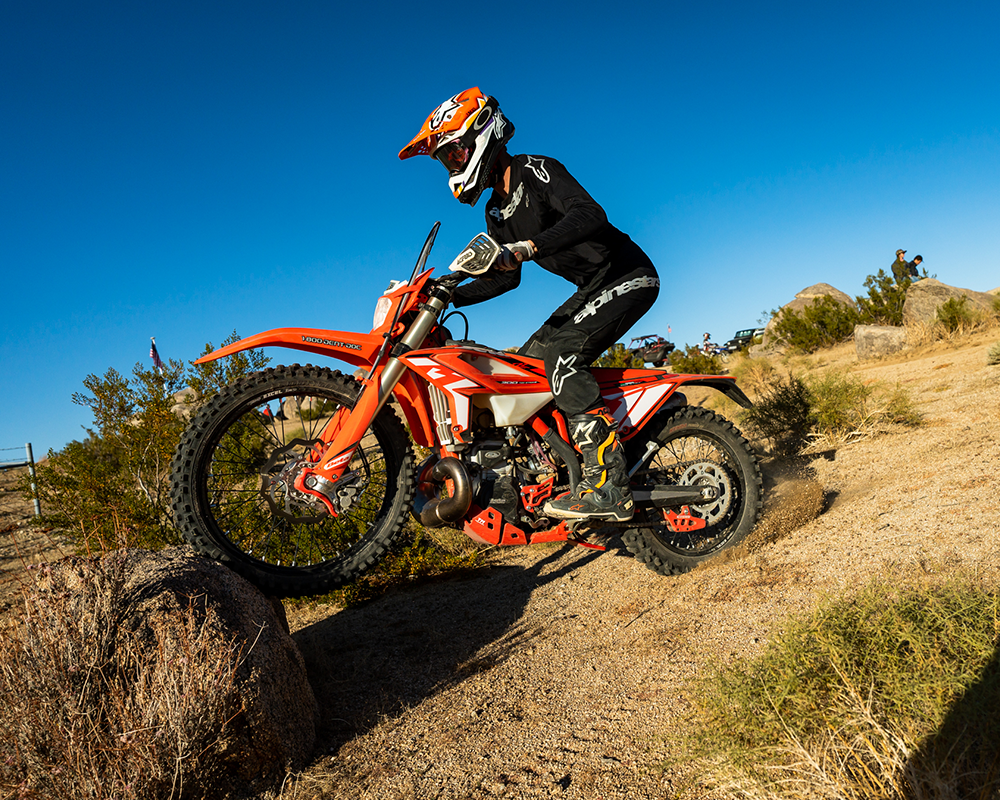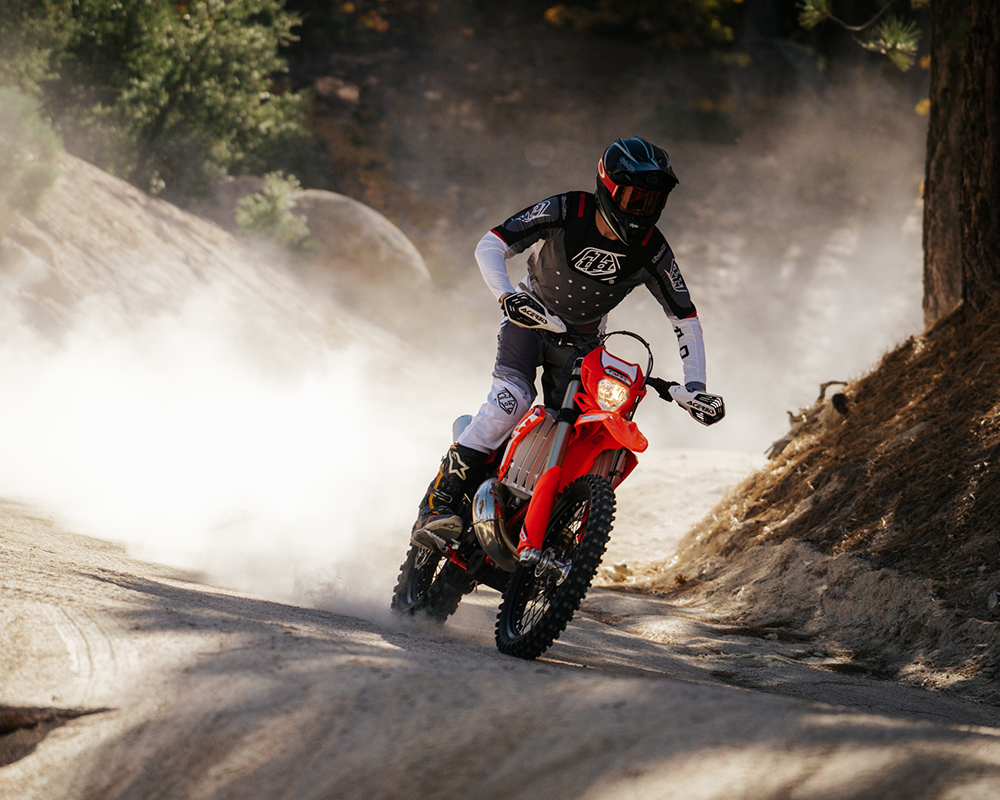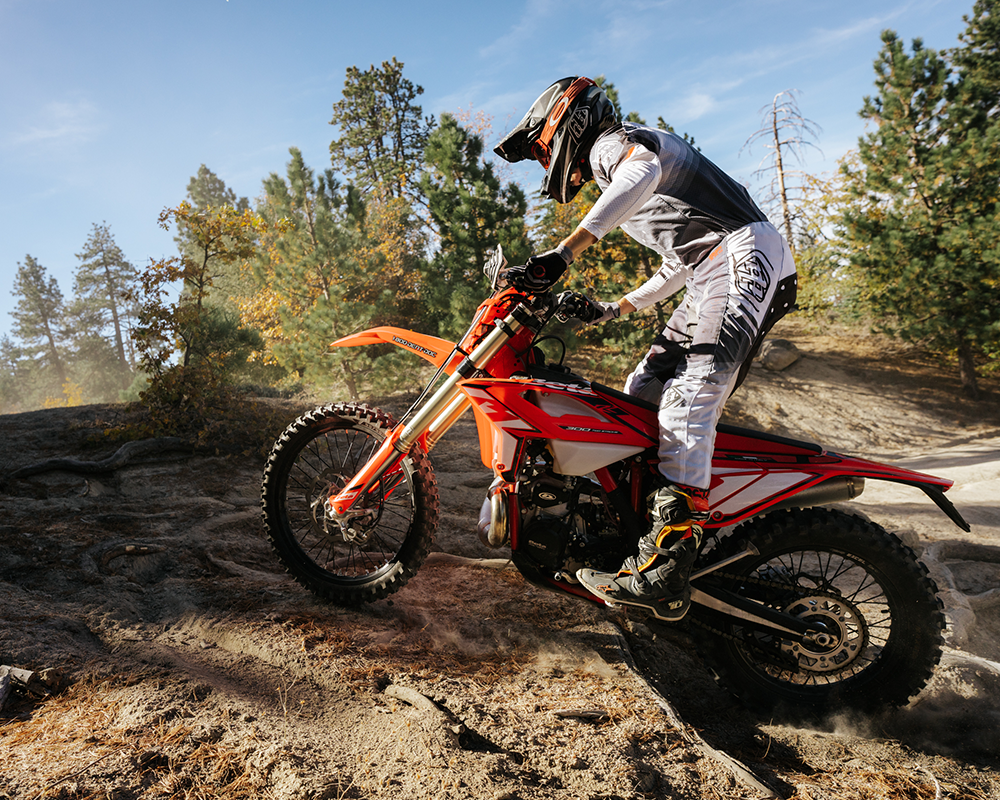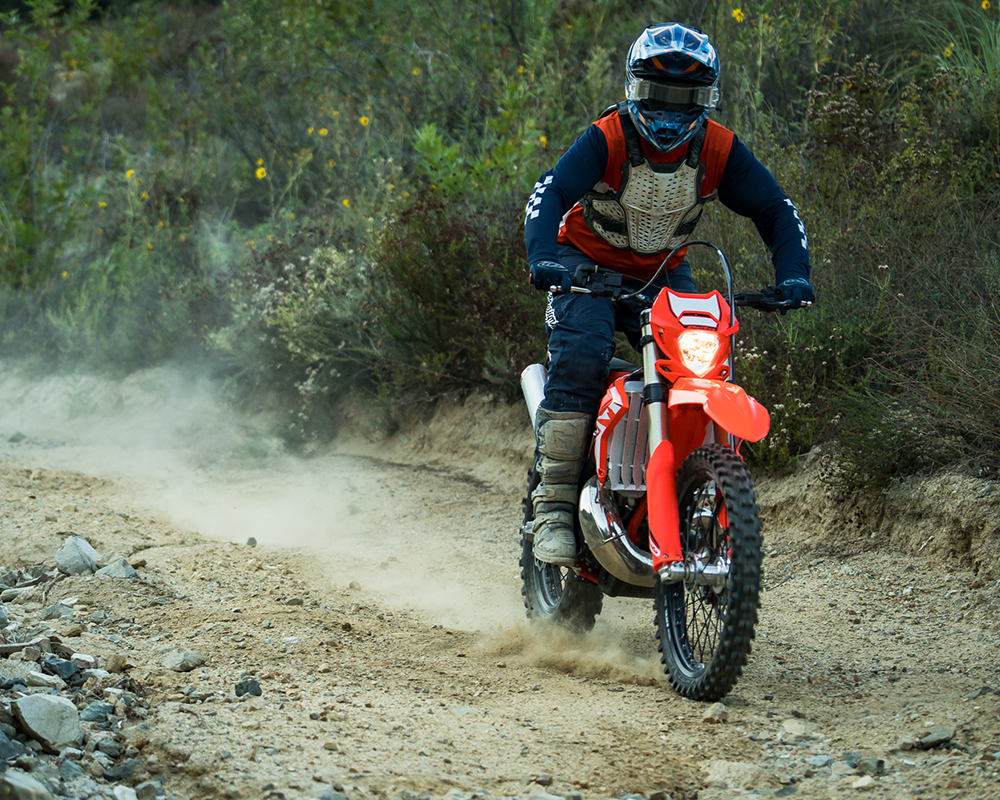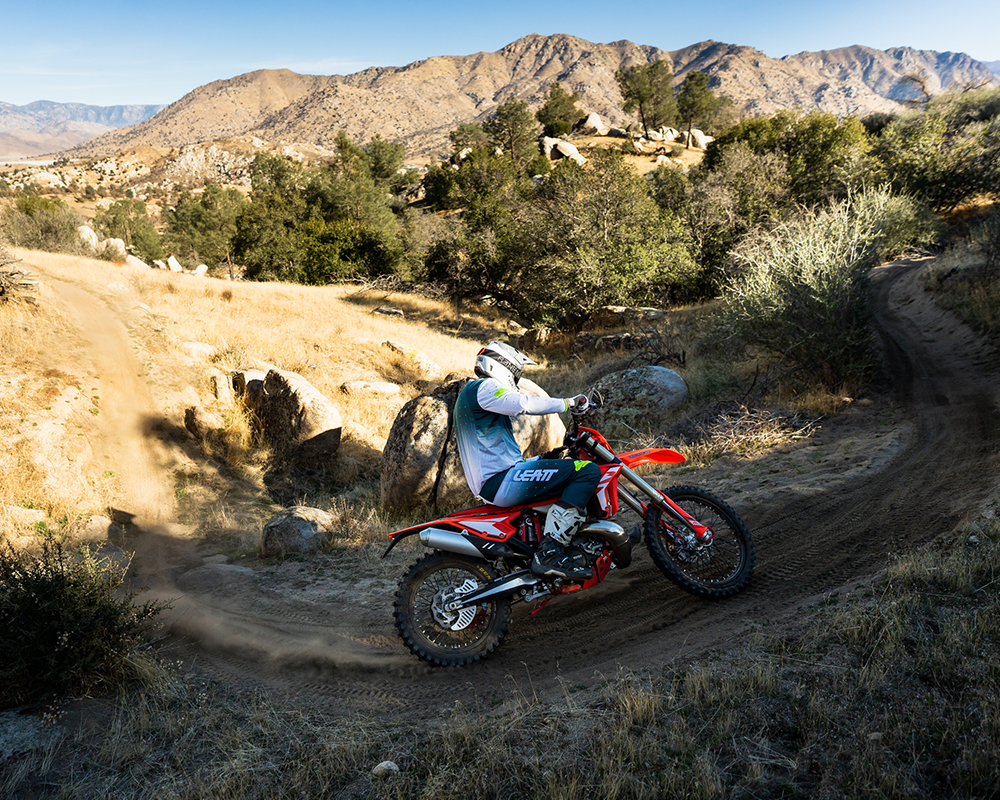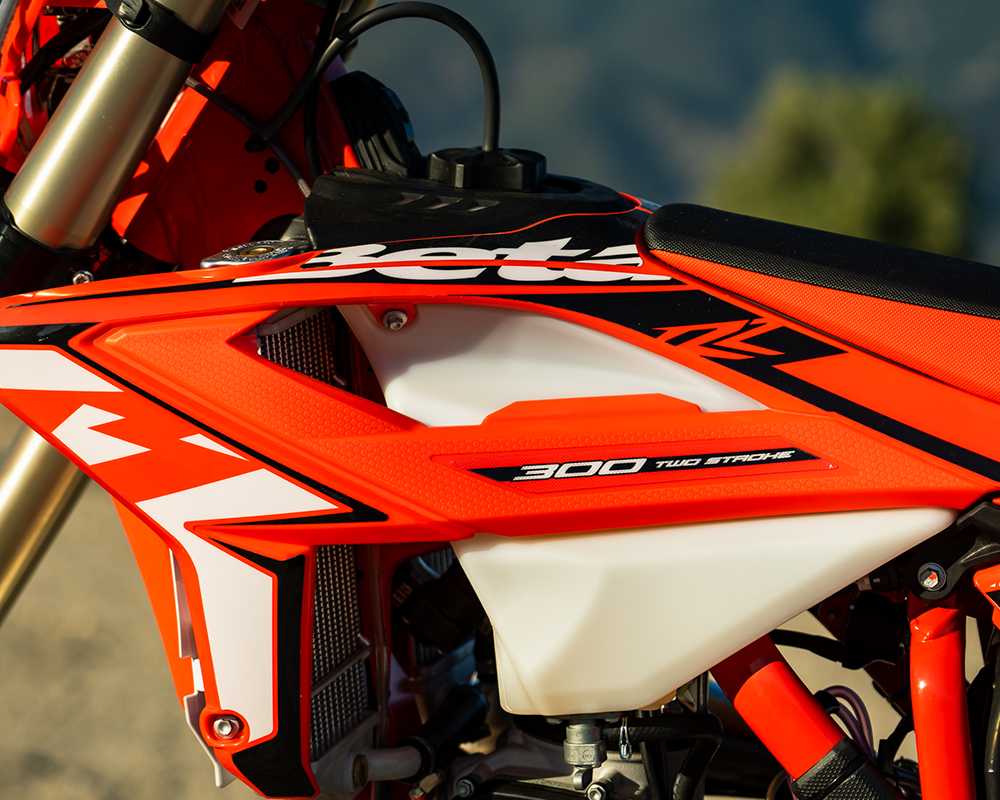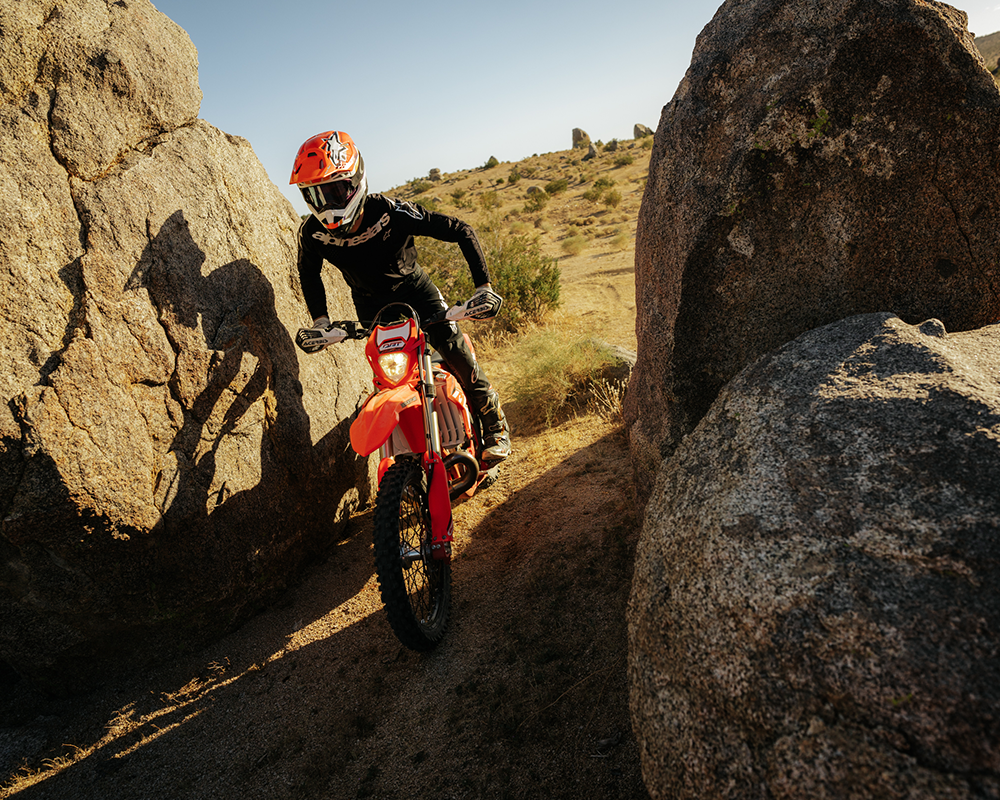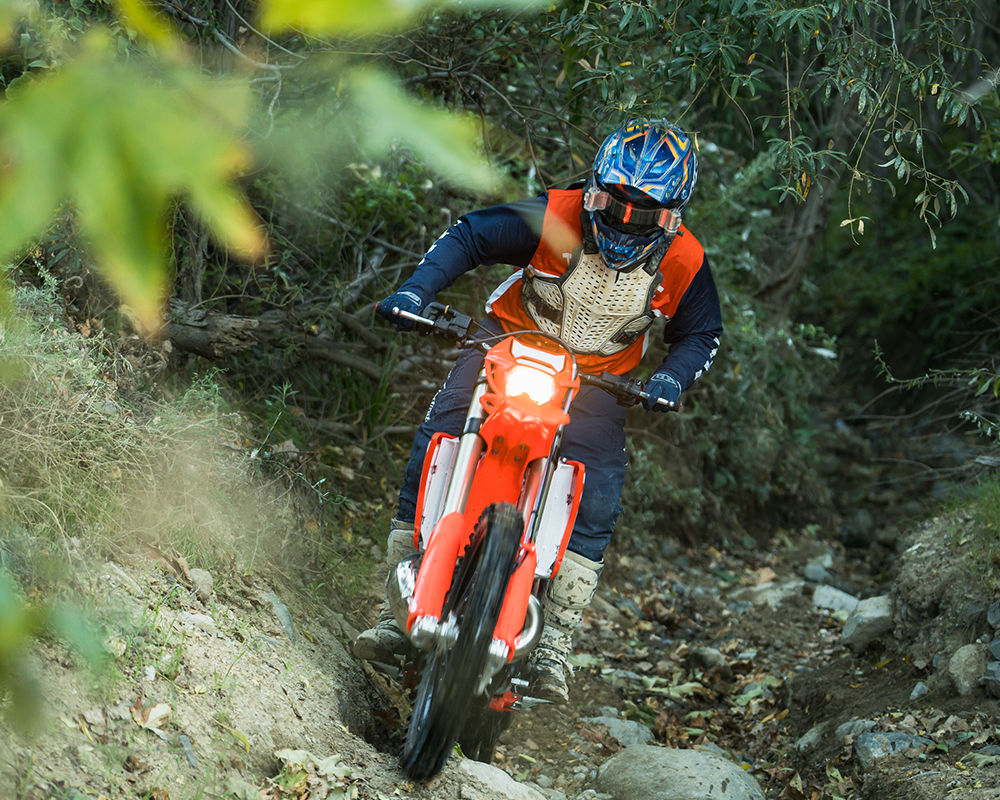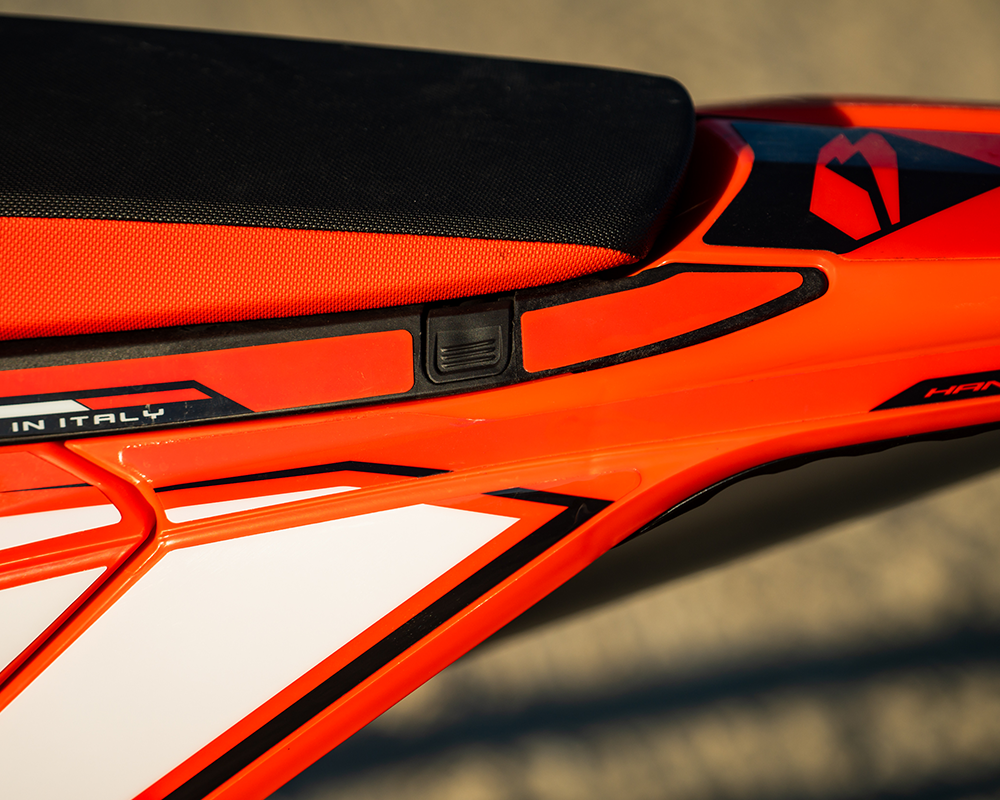2024 Beta 300 RR
Old Dog Doesn't Need New Tricks
MSRP: $10,099
- Powerful engine with torquey, exciting power.
- Stable chassis that maintains a lightweight feeling.
- Well built motorcycle at a reasonable price.
- Vibrates a bit at higher RPMs.
- Suspension takes longer to break in than most.
Introduction
- Enduro, trail focused 300cc two-stroke.
Beta is sticking to their guns in producing carbureted two-strokes, and to the delight of many off-road riders, the 300 RR is a worthy option in the big bore two-stroke class. Serving as the enduro or trail-oriented 300cc two-stroke in their model catalog, the RR has all the makings of an enduro bike and features oil injection, an adjustable power valve, odometer, lights, and more. Different from the Race Edition, the standard RR utilizes Sachs suspension components front and rear, is oil injected (though still uses a carb), and doesn’t have all of the catalog components like footpegs, axle blocks, etc. that come standard on the Race Edition models.
Changes
- Bold New Graphics.
For 2024, there are no changes to the 300 RR.
Power
- Torquey low-end power.
- Smooth and linear power delivery throughout the rev range.
- Improved throttle response compared to previous models.
- Oil Injection system keeps up with the demands.
First thing’s first – this bike has plenty of power. The bike has a very long and smooth powerband starting with a robust amount of torque down low. It’s quite impressive how this bike chugs and pulls at incredibly low RPMs for a carbureted two-stroke. We’ve come to expect this out of the FI options on the market, but Beta has made it work with their carb models and it’s pretty astounding the terrain we can ride in second and third gear with little to no clutch use. Off the bottom, the power continues building into a girthy mid-range which acts as the sweet spot of the power. From there, it tapers off as the RPMs build, typical of bigger bore two-strokes, but it pulls further than most 300s on top which adds some excitement and fun to it.
The 6-speed wide-ratio transmission is really good. First gear is plenty low enough for slow, technical terrain and sixth gear is tall enough to hit 90 MPH with stock gearing. On the 250, we felt we needed to add a tooth to the rear to tighten up the gaps a little bit, but the 300 has enough torque and power to pull each gear a little better and we feel stock gearing is spot on.
The Brembo hydraulic clutch works well and is effective. It has good modulation, and a quick hit to the clutch will bring this engine to life if you desire.
The Keihin carb felt jetted correctly and was hassle free being less finicky than others. They can crawl up seemingly anything at the lowest RPM and they chug along without stalling, gurgling, or any hiccups. The oil injection system is spot-on in our books. We held it wide open across dry-lake beds, rode way too tall of gears in tight singletrack, and the engine never faltered and ran funky. We averaged about 100ML or about 3.5 OZ of premix to ~2 gallons of fuel, so we were safe on running several tanks of gas before needing to refuel. And when it was close to time, we had the light come on on the odometer to give us a warning. Our only gripe with this system is it sits just above the air filter, and when we didn't have a funnel, we almost always would spill some premix atop the filter.
Vibration is average – it vibrates more than a modern KTM, but less than Beta’s of 5-7 years ago. After all, it is a two-stroke and a little vibration won’t kill you – some say it adds character!
Adjusting the power valve can make the engine feel more aggressive and hit a little harder, or tame it down even more and produce rideable power. Aggressive riders and faster terrain responded well to turning the adjuster out (counter clockwise) while more technical terrain and lower level riders appreciated adjusting it in (clockwise). It doesn’t make the biggest difference, but it makes enough and is worth playing with. We even played with different power valve springs and most of our testers liked the more aggressive, green spring (yellow is stock) which is available through Beta. It allowed us to run even taller gears and get more excitement out of the potent Beta motor.
The two different map modes – “Sunny” and “Rain” – are quite different from each other. Lesser skilled riders found peace with the “rain” mode in an assortment of conditions as it tames the overall power of the bike down quite a bit. It acts as sort of a governor and nearly eliminates any wheel spin or surges in power especially at higher RPMs. More advanced level riders never found the need for the rain mode, strictly sticking to the “sunny” mode in all conditions (including in the rain/mud) as they felt using the clutch and throttle with their wrist more effective. (Note: with the aggressive power valve spring, Advanced riders could use the “Rain” mode effectively.) Still, it is nice to have and we threw a few beginner/novice level riders on this bike who praised the rain mode for its “Rideability'' - Beta’s key tagline with all of their bikes.
Suspension
- Suspension tuning strikes a good balance between plushness and control for trail riding.
- Adjustability allows for fine-tuning based on rider preference and terrain.
- Sachs components are capable.
The Sachs components are good, despite what you have been told. For this bike’s intended purpose, they have a lot of promise and work well in trail riding conditions. Our first ride on the suspension wasn’t great, but we know Sachs components take 2-3, sometimes more, hours of break-in before they start working well, and our bike came fresh out of a crate. By the second ride, things started to work much better and only continued to improve from there.
They are designed for trail riding, and lack some bottoming control when being ridden really aggressively, but that’s to be expected from any enduro or trail bike. The small bump compliance is there, and the bike soaks up rocks, roots, and common trail hits quite well. The forks in particular offer a lot of feedback through the hands, but in a soft and supple way. You feel a lot of what’s beneath you, but without beating yourself up or feeling harsh.
We were looking to get better bottoming control out of the forks, so we added 20cc of oil to each fork leg, which brought it to a height of 100mm (from 130mm). This helped a lot in making it more progressive and less bottoming in bigger hits.
With the Sachs forks, running negative air in the forks (bleeding the forks with the bike on the ground, not unweighted on a stand) helps a lot with initial comfort. Additionally, changing the stock fork oil after the initial few rides has always worked really well with the Sachs forks in adding additional comfort. Additionally, the clickers make a noticeable change and the rebound does overlap on the compression damping when tuning, so we play with that first.
The shock mirrored the fork in setup and is overall good when not pushed too hard. Lacking bottoming resistance is the biggest issue for racer speeds. But the clickers can get it 90% of the way. They do work and we’re pretty sure revalvING both the front and the rear could bridge the gap.
Below are some clicker settings we liked for a more aggressive setting without getting too harsh:
Shock: Low Speed Comp: 5; High Speed Comp: 8; Rebound: 11
Fork: Comp: 9; Rebound: 11
It’s important to note that the Sachs shock on this bike has a two-piece body that doesn’t come tight enough from the factory. When adjusting sag, you can (and we did) loosen up the shock body and were forced to have it rebuilt and put back together by TCS Powersports. Since TCS retightened it, we haven’t had an issue which tells us it's not a problem with the shock itself, but just that it isn’t getting tightened enough when being put back together. One way to work around this is when adjusting sag, instead of tightening the top ring down onto the bottom ring, get the two rings close together by hand, then tighten the bottom ring up against the top ring. This keeps you from spinning the shock body loose after you finish adjusting sag.
Chassis - Handling
- Nimble and precise handling.
- Excellent balance and stability in tight corners.
- Responsive to rider input.
In years past, we’ve liked what the Beta chassis brings to the table and how it handles. It’s one of those bikes that does it all pretty well. It turns pretty good, has pretty good stability, and even has good bump absorption. All characteristics you’d want in a bike. However, some riders felt, the chassis has issues in stability when the front end is loaded (under heavy braking at speed or through bigger bumps), we’d get a nervous feeling with an unsettled, twitchy front end. This isn’t as apparent when trail riding as you rarely find yourself in this more racing type of scenario, but it is still something we feel from time to time. Having spent time on the updated Race Edition chassis, those feelings have been mitigated with their new frame or with the KYB suspension components. Conversely some riders felt the front (headstay, triple clamp) area of the frame is stiff. It gives too much feedback to the rider. We are trying out some modifications to quell both this and the vibration of the bike and will update with a modification video soon.
The Beta’s scale weight (252 lbs full of gas) has never matched up with what is felt on the trail and we feel that continues with this machine. It acts very lively and responsive for a long and stable chassis, yet feels planted for a 300cc two-stroke. It doesn’t have the overall traction that a bike like the KTM has (which is now 1 lb heavier than this Beta) when on the edge of your tires, but it doesn’t deflect on small chop and square edge holes which goes a long way in comfort and stability. Likewise, it has a very light front end feel, which is part of why it feels so light and nimble,
The cockpit on the Beta is accommodating to most riders with a very flat seat profile and a spacious rider triangle. The stock seat is rather uncomfortable, and switching to an aftermarket foam works wonders on this bike. On a side note, the push button seat is great being simple to use and very effective. Additionally, the bike is very narrow and depending on the rider, it is liked or just okay – no one has disliked how narrow it is.
The Nissin brakes on this bike are about average. We never had any issues with the front brake fading or feeling spongy, it just worked. On the other hand, some riders struggled with the rear brake fading quicker than normal and we could never get it to feel firm. If you like having some modulation in the rear pedal, this will suit you well but we could never get it to work quite as strongly as we’d like. The Brembo hydraulic clutch worked well and there were zero issues with it along the way.
The stock Maxxis FIM Enduro tires simply don’t work great. They lack traction and add harshness on both ends with a stiffer feeling tire. Maxxis makes great tires, just not these ones. Quickly changing out to your favorite set of tires will work wonders with this bike.
The air filter design, while it is toolless, isn’t as good as some others. The airbox is a tighter squeeze, and the moving tab that cinches down the filter cage is a bit finicky, especially when you’re learning how and where to position it the first few times you change a filter. Additionally, we found it best to run our fingers around the rim of the filter once installed to make sure it did properly seat in its place. More than a few times we found an edge to be slightly misaligned or not fully sealed which could lead to issues down the road. It’s not a terrible design, and much improved from the design on the ~2017 era Beta’s, but it could use a little refining to be more user friendly.
While it should be common practice, regular nut and bolt checks go a long way on this bike. In particular, we found subframe, shifter, and rear shock bolts all came loose on more than one occasion. Putting some blue threadlock on these didn’t hurt and helped keep them tighter for a longer duration.
We have had great durability with Betas in the past. Racing them in 24-hour events with no failures and impressed with 300+ hour teardowns on a 300 a few years back. Some of the weight is in fact helping this bike out here. Things like a robust electric starter may weigh more but they also last longer. Cases are a little thicker, some gears are a little heavier. This is a balancing act and most would argue that it is worth the weight if you need longevity. However, there are some things that have been weak points in the past and Beta is doing something about them. Take the sub-frame for instance. It is and so far acts stronger. Parts like the chain, levers, wheels, and bars are all robust and took all of our abuse without an issue.
Conclusion
- Well built, capable off-road bike.
This bike is really good. It’s an old school two-stroke with open cartridge forks, a carburetor, and a steel frame, but it all just works. The motor is the most impressive on this thing, as it has loads of power across the board and can compete with a fuel injected bike in smoothness at low RPMs. The suspension is worthy and just fine for most trail riders all the way to recreational racers. The chassis is a do-it-all chassis that feels long and stable but quick and nimble – sort of the best of both worlds. They’ve steadily been improving over the years and they continue to be a favorite amongst our testers.
Recent Product Tests
Leave a Reply


